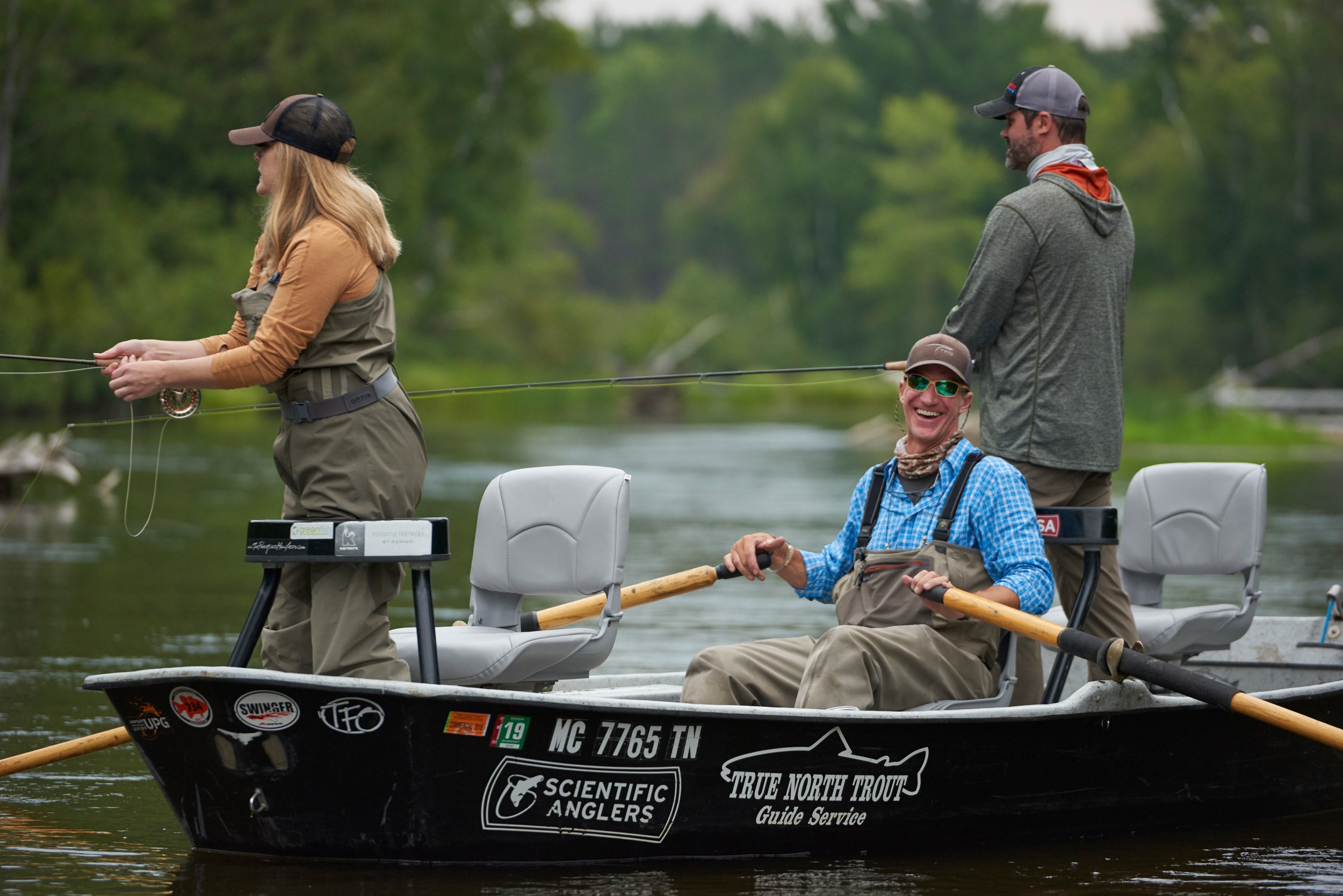The mere thought of Fly Fishing usually summons an image of some serene location. Standing in moving water, crabapple tree blossoms fill the air with fragrance, Cedar waxwings dart from tree limb to deadfall waiting for the next mayfly, and dimples on the water surface sporadically appear as trout race to engulf an emerger. Something out of a Hemingway picture. It is not that far off, you just have to time it properly, get some basics down, and be in the river when the time is right. Does this sound enjoyable? Relaxing? Welcome aboard! The Pandemic has introduced thousands of new anglers to the ultimate ‘Social Distancing Sport’. You are about to experience a lifetime of joy and sorrow- albeit in a good way. Fly fishing has so many aspects, it will be very difficult to capture the immense scope of it all in a short blog post, but I shall attempt to grapple with it as best I can and help you get your feet wet.
Featured Image Credit: Lance Nelson
The BASICS- Rod Reel & Line
Let’s start with the gear. If you aren’t hiring a local guide here’s a look at what it takes to get this new passion started. You must acquire a rod, reel, some flies, and perhaps some waders. You can get by wet wading in mid-summer or sticking to lakes and docks if you choose. A rod and reel combo will get you on the water. Most kits start around the $200-mark, better ones obviously have higher sticker shock, but at this stage of the game, the average angler doesn’t have the skills for a $900 rod. I recommend Temple Fork Outfitters, the NXT combo is $270-280 (in five or eight weights), with a line and a rod case. Great warranty and it is ready to fish out the door!
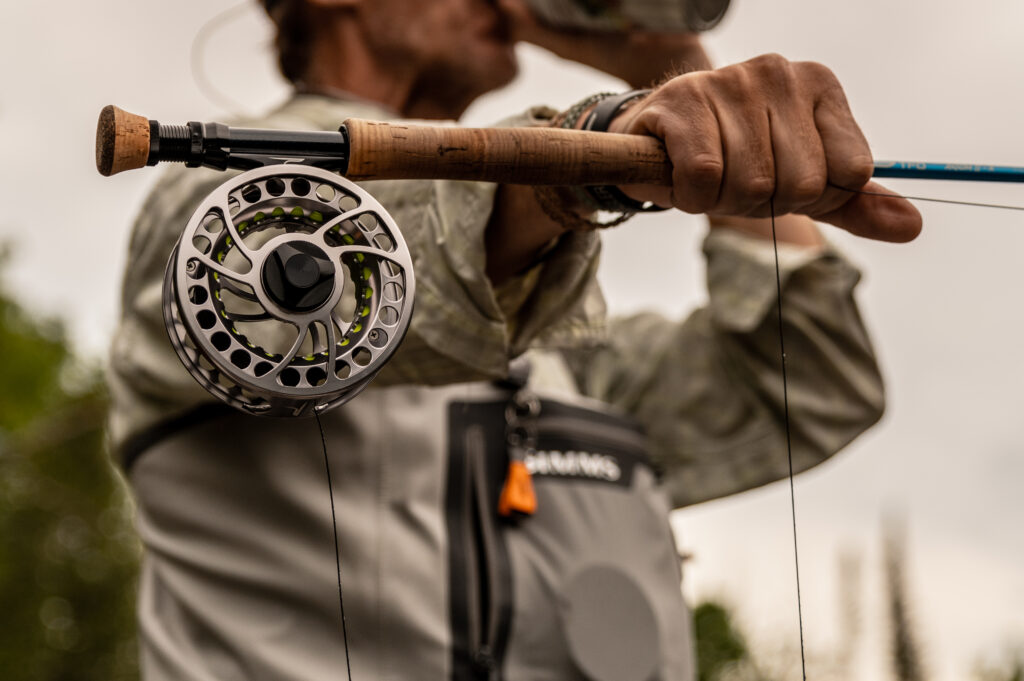
Photo credit: Sam Bosworth Media
Should you purchase a rod for trout in streams or are you planning on throwing streamers or planning a saltwater destination in the future? Rods generally come in sizes regarding line weight – a seven or eight weight can be used for streamers, whereas a three or four weight would be considered more appropriate for small creeks and dry flies or nymphs (immature insects that live underwater). Steelhead and Salmon require a beefier rod to handle the size of the species you are chasing, a nine or ten weight will suffice and can double as a perfect saltwater destination rod for snook, redfish, or tarpon. It is more about the size of the fly you are throwing to match your rod size. Reels become more instrumental when you move to steelhead or saltwater, whereas most of the trout we catch in Michigan rarely go to the reel or backing (except carp and steelhead). Consult the kind sales associate at one of many fly shops across the 45th parallel – read on to learn more about where to find these fine purveyors.
What’s the most important part of your equipment setup?
I am willing to start a huge debate: prepare for much discussion among your peers. I strongly feel Line is the most important part of the fly setup. Followed by the rod, then the reel. The actual FLY is important as well, we shall get there soon enough. A good angler can cast an average rod with a good line, a great rod does not perform well with a bad line. Taper and design are critical because we are throwing the unweighted fly with the mass of the line, and it needs to balance the rod. To understand this, get some casting lessons from a certified casting instructor or try a few rods at the fly shop. Recently I had a chat with Niall McCarthy from Motor City Anglers and asked him for his best advice on teaching new anglers how to cast- “Imagine a big clock and keep your rod above and between 10 & 2.” I also highly recommend you join a local TROUT UNLIMITED chapter- in Petoskey, we have the Miller VanWinkle Chapter TU. When you surround yourself with others who are passionate about the rivers we fish, you can become a better angler. The culmination of experience will also be very helpful on your path to success.
Cut the Learning Curve
Another highly advisable route as you get started is to book a day with a guide for a more in-depth look at all the little tricks, they have developed over years of teaching others how to be a better angler. Time with a guide will certainly cut the learning curve in half, but I also insist a new angler to spend some time casting and even going to a bass/bluegill pond and catching a few bluegills in June. It will enhance your response/reflex to hook a fish and improve your timing on casting. The more time you spend learning how to cast the more time it will allow on the river to actually fish.
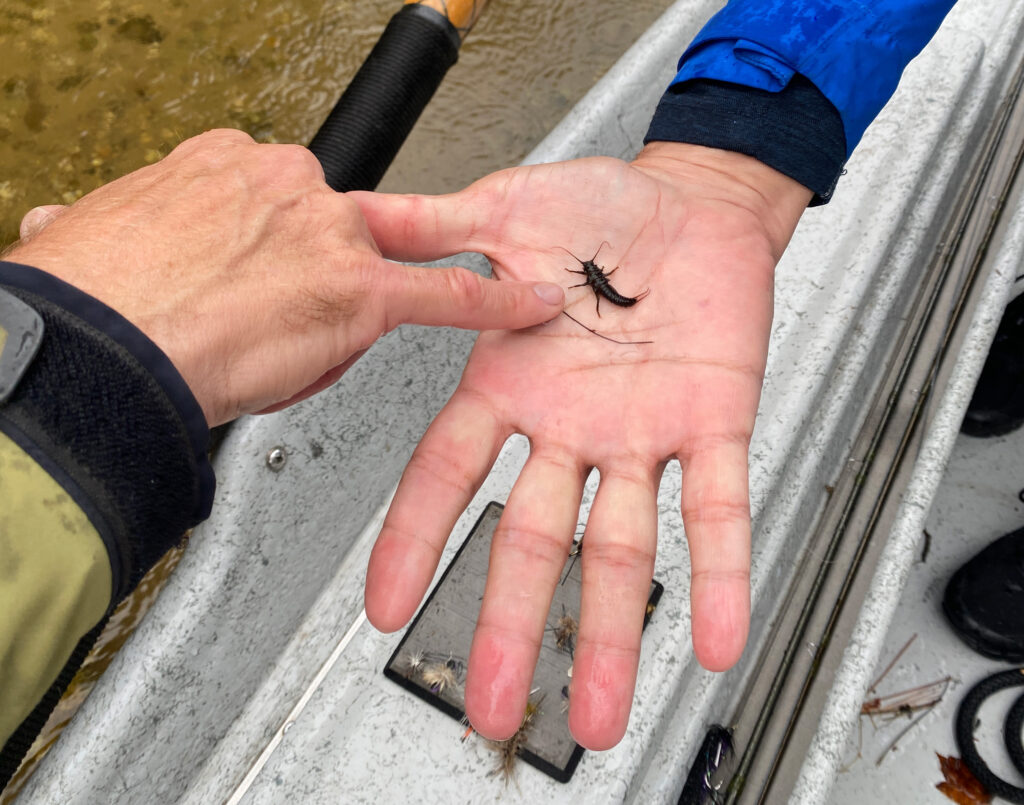
Photo Credit: PetoskeyArea.com
Macroinvertebrates – The aquatic insects that make it happen.
After beginning this process, you will find the knowledge of entomology very useful. You can take a college course on macro-invertebrates, but you really don’t need to know the Latin name of the Henrickson – ephemerella subvaria to know when to tie on the proper fly, but it helps and makes it fun when you get it right. Every angler I know has a copy of Ann Miller’s book on Upper Midwest Hatches, it has excellent photography and includes the nymph as well as adult stages of the bugs we pursue. Check out the Tip of the Mitt Watershed Council – a great resource for our rivers and bugs. They also need more stream monitors, which come with a crash course on macroinvertebrate identification.
Learn from home – Surf the Web
These days of the World Wide Web – come with many benefits but disappointments as well. Follow some of the best out there, Mad River Outfitters and ORVIS for many basics and you can learn vast amounts of information. Their YouTube Channels are an incredible resource, especially if you decide to go to the dark side and begin tying flies. Don’t kid yourself, it DOES NOT save you money. However, for those cold dark winter months, I truly enjoy tying a fly that I can envision a beefy trout sipping later in the year. So, it is more mental relaxation- call it man crafting, it keeps me out of trouble. The downside of the internet – is don’t expect to catch all the swamp donkeys and piggy trout or leviathan Tarpon you see on the videos. Some of these interweb famous people accrue many hours or even weeks of stalking and waiting for that moment, all for 15 seconds of fame. It does not happen that quickly or easily. This is a process, and one should enjoy every step of the journey.
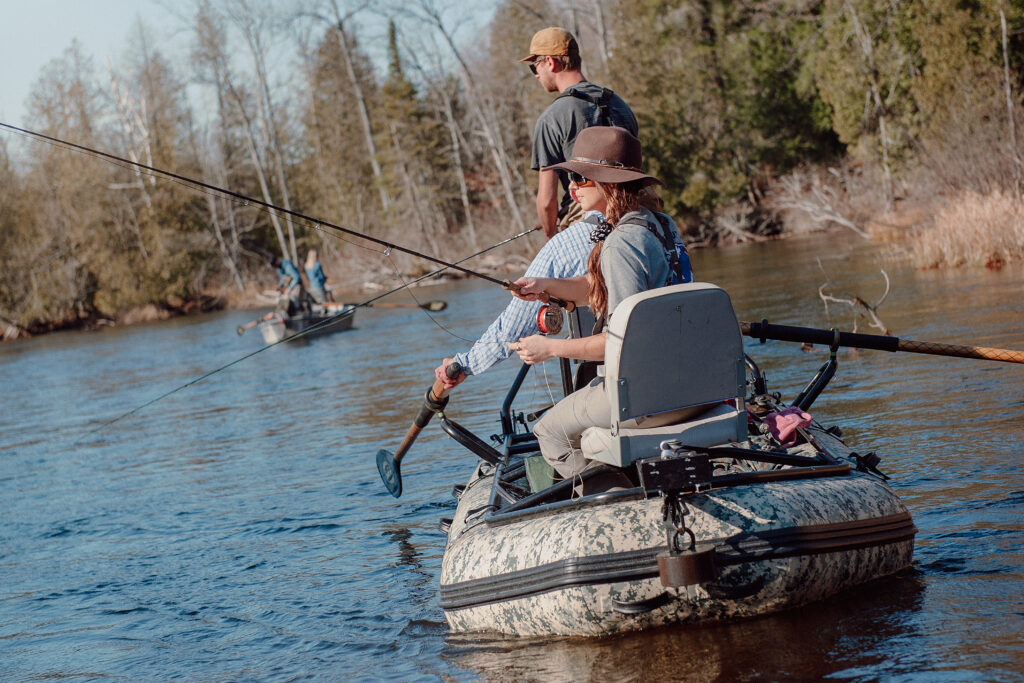
Photo Credit: Kim Mettler
Get A GUIDE! Save Precious Time!
Here is another huge debate: Should you hire a guide? Whenever I travel, I book a guide for a day or two, to learn the proper technique for wherever I may be visiting. Whether it’s Michigan, Montana, Colorado, Belize, Florida, or Texas, getting a guide saves you valuable time. Why is it so beneficial? They spend anywhere between 75-200+ days a year on the water you are visiting, they know how the fish behave and where they are. You could do it yourself and stand in the river flailing at nothing for four hours and later find water nearby you were more productive.
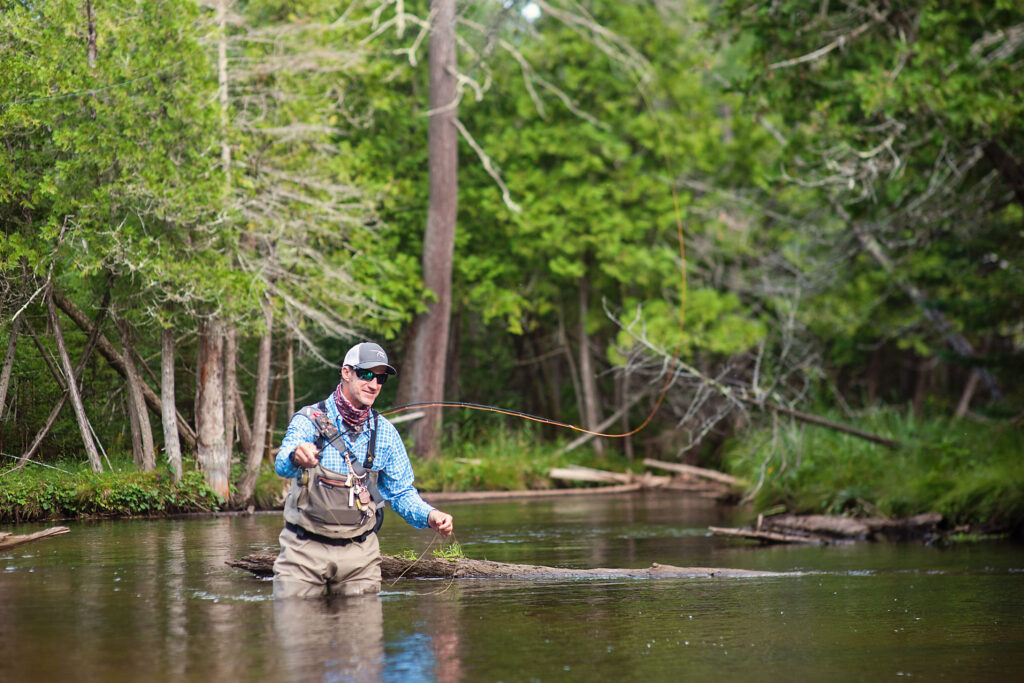
Photo Credit: Kim Mettler
In A Boat or Wade in the Water?
Next dilemma, should you float or wade? I get asked this often. First off, check your physical ability. If you choose to wade, the rivers we have in northern Michigan are not nice gravel cobblestone streams like out West, we have mud, muck, beaver dams, and goose poop tar pits. Sure, there are wadeable stretches of many rivers we fish, but the easy access waters mean they get two to three times the traffic other ‘hard to reach’ rivers see. The float trip with a guide – you will see anywhere between 8-10 miles of water in a full day, this often gives you multiple shots at a variety of water types and hatches along the day float. Seeing the water over eight hours also gives you a chance at watching an actual hatch and seeing the process in action. Most often your guide will give you valuable information on the river you are enjoying, along with a good shore lunch.
Fly Fishing Resources in the Petoskey Area
Fly shops you should visit in our area: Boyne Outfitters/Boyne Falls; Grayling: Gates Au Sable Lodge, Ron’s Fly Shop, Old Au Sable Fly Shop, and North Branch Outing Club. If you are in Mio, be sure to check out Au Sable River Outfitters. Traverse City has Streamside Orvis. Fly fishing guides can be provided at most of these shops and many offer casting lessons and fly-tying classes. There are also many independent guides who appreciate teaching beginners. I would guess about 35-45% of my clients are first-time anglers looking to get into fly fishing. Wild Rise Outfitters, White Pine Guide Service, Bear Handed Guide Service, and True North Trout are a few who like to teach and know the rivers we have in our area. I also highly recommend Ed McCoy and Jon Ray from MANGLED FLY, they are some of the industry’s best guides and solid guys to know. They are genuine, helpful, and friendly whenever we pass on the water. They realize we are all on the same team and work for one resource – our rivers.
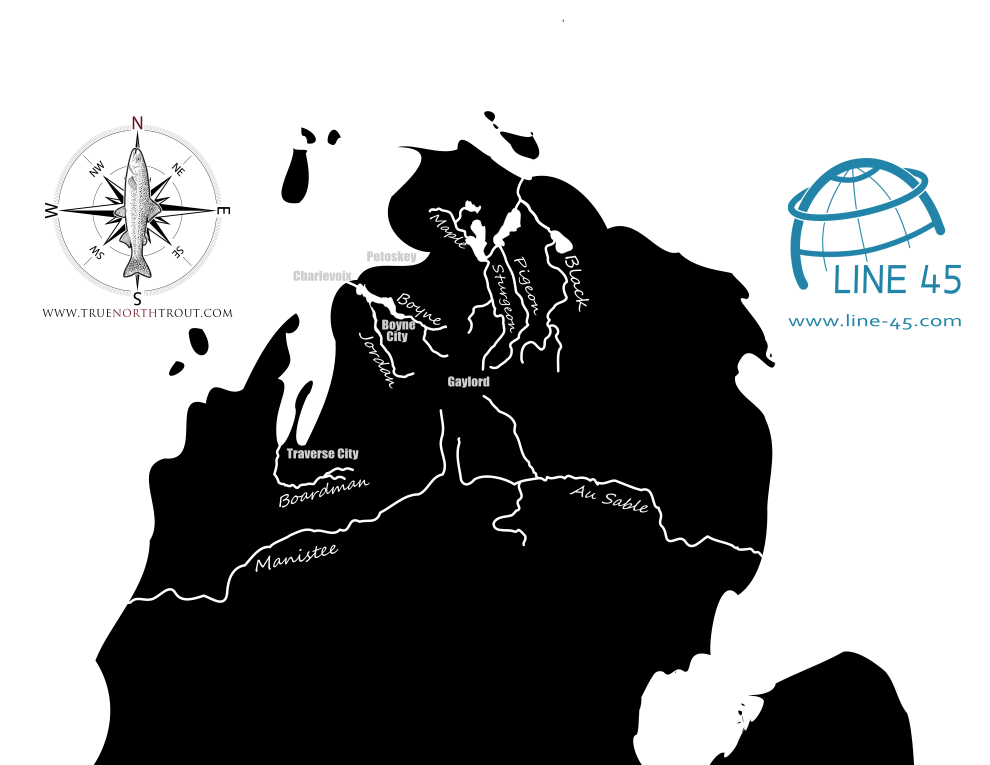
The State of Michigan has a Trout Trails app you can download. Fishing with a guide will require your own license – unlike states such as Florida.
Fly Fishing can take you places you never imagined. If it swims, it will eat a fly, from Alaska to Maine, from Cuba to Seychelles, there is an entire world for you to discover. I have one small piece of advice, always remember it is FISHING, and Have FUN!
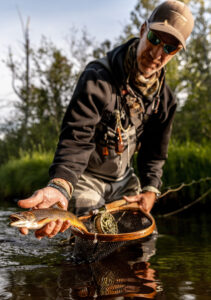
Photo Credit: Sam Bosworth Media
About the Author: Brian “Koz” Kozminski has been ‘Up North local’ for twenty years. Member of Trout Unlimited and Backcountry Hunters & Anglers, he loves to promote conservation for the resources we have been blessed with. He is also a sales representative for TFO rods, Rainy’s Flies, FisheWear, WINGO outdoors & Wind River Gear. When he is not floating in the Upper Manistee River, you will find him jumping beaver dams on the Jordan, Maple, or Black Rivers in the Petoskey Area. Koz also writes and guides for True North Trout and occasionally contributes to TROUT magazine for MITU.

